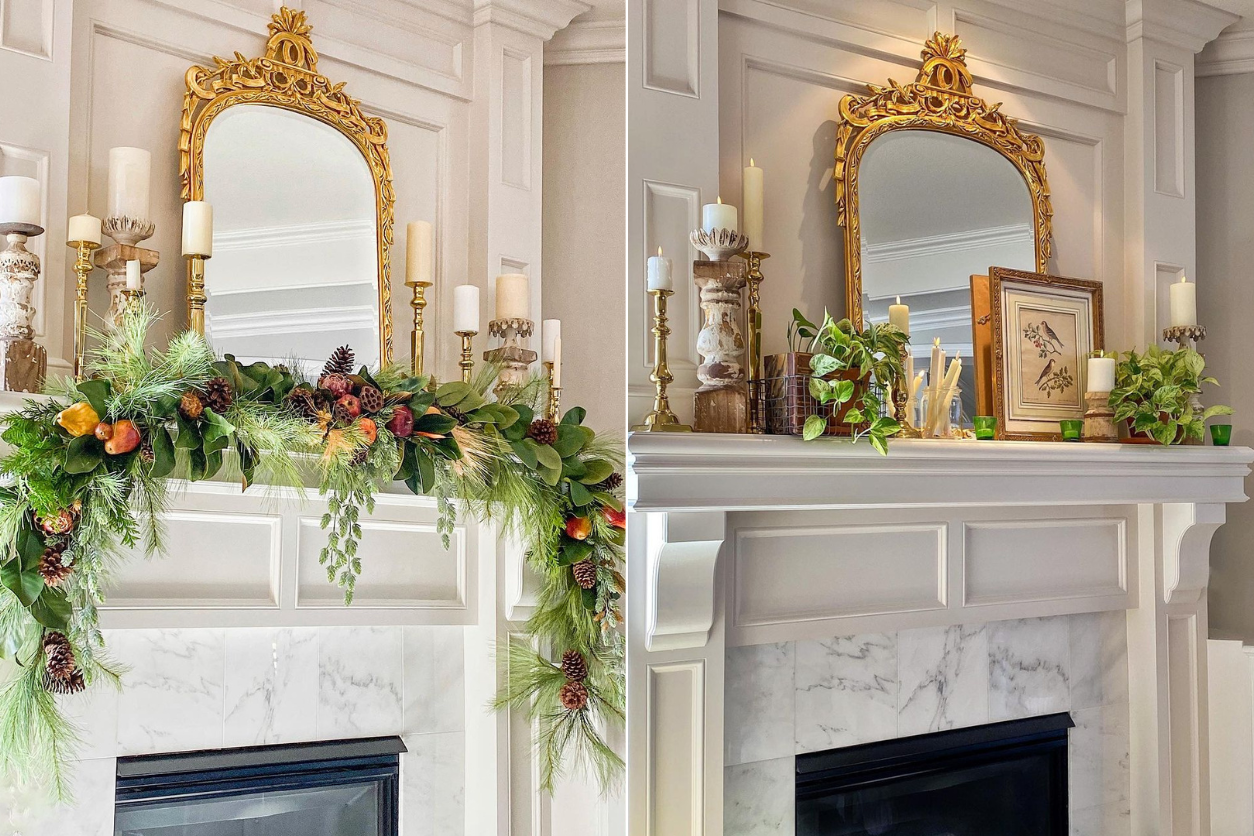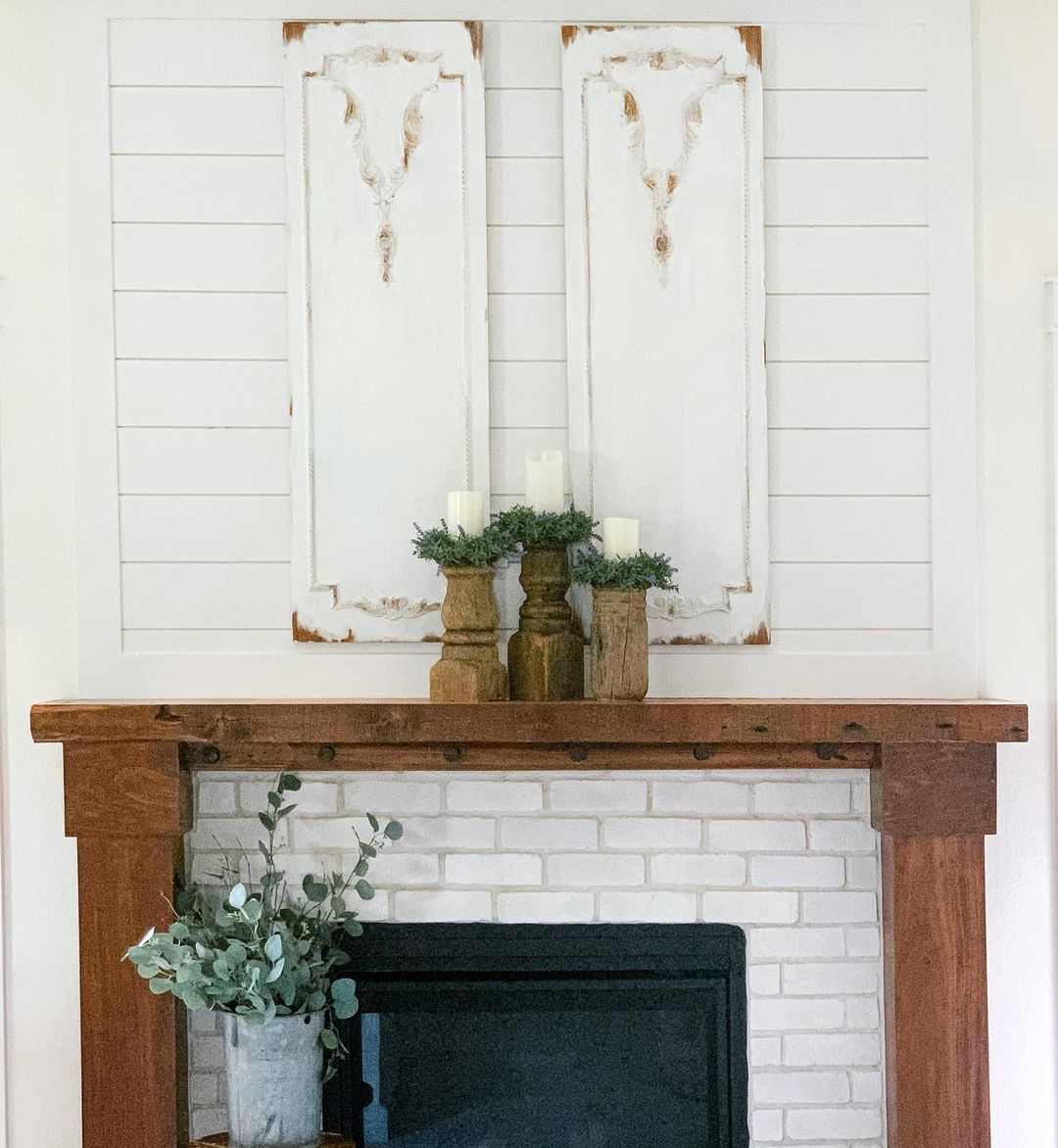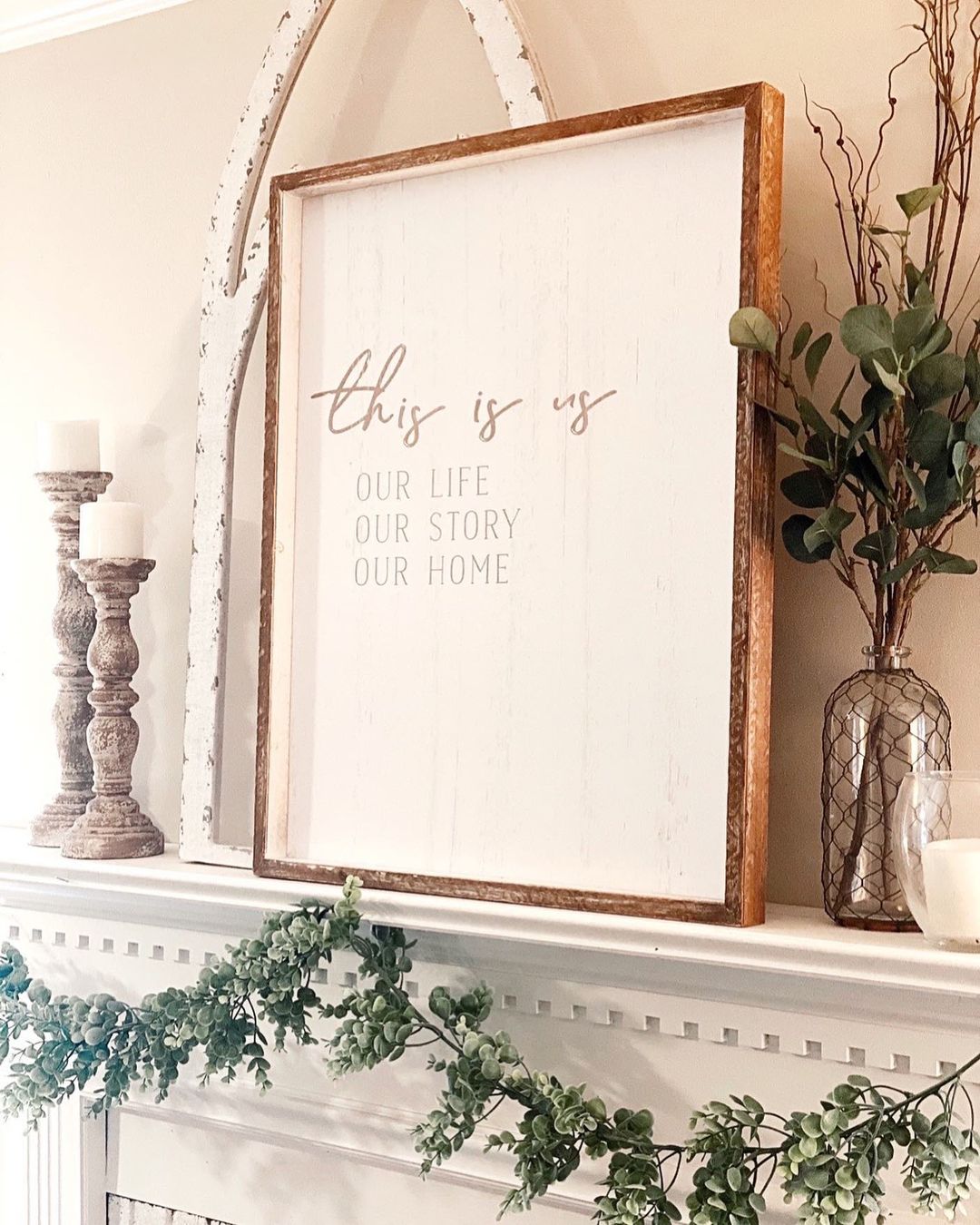How to Decorate a Fireplace Mantel

Instagram: @suzannezinggstyle
I love a good fireplace mantel. There’s something so cozy about a beautifully styled one; It’s like a little vignette that sets the tone for the whole room. I’m always tinkering with mine, changing it with the seasons, or just because I’m feeling a little restless.
The key to a great fireplace mantel is balance. You want it to look intentional without being too cluttered. It’s all about finding those perfect pieces that work together and create a cozy atmosphere. Plus, you don’t need to spend a fortune to achieve a stylish look.
With a bit of creativity and some thoughtful choices, you can transform your mantel into a beautiful showcase that reflects who you are and what you love.
1. Create a Strong Focal Point

The first thing I like to consider when decorating a mantel is the focal point. This is usually the largest or most eye-catching piece and serves as the anchor for the entire design. For many people, a piece of artwork or a large mirror can work beautifully in this role. Placing it centrally above the mantel gives the space a sense of balance and symmetry. If you’re using artwork, choose something that resonates with you—something that you’ll enjoy looking at every day.
Once you have your focal piece in place, it’s time to build around it. One approach I love is to use varying heights to create a dynamic visual flow. This can be achieved with tall vases or candlesticks, which draw the eye upward and add some vertical interest to the arrangement. If you’re using a mirror, these taller elements will also reflect in the glass, amplifying the effect.
2. Layer with Textures and Materials

Now, let’s talk about textures and materials. Combining different textures is a great way to add depth and interest to your mantel. Consider using a mix of materials like wood, metal, glass, and ceramics. This can help create a layered look that feels rich and curated. I always enjoy mixing vintage and modern elements, such as pairing an antique brass candlestick with a sleek, contemporary vase. The contrast between old and new can give your mantel a unique character.
Adding greenery is another effective way to introduce texture. Whether it’s fresh flowers, potted plants, or a simple garland, greenery can breathe life into the space and soften the look of other materials. If you’re like me and don’t always have time to fuss with live plants, high-quality faux greenery can be a lifesaver. Just be sure to choose pieces that look realistic, and don’t be afraid to bend and shape them for a more natural appearance.
3. Personalize with Decorative Accents

The real magic happens when you start to add the smaller decorative accents that reflect your personal style. This could be a collection of small framed photos, a few carefully chosen books, or even a quirky sculpture that always makes you smile. These pieces give your mantel personality and make it feel like an extension of you.
When adding these accents, consider grouping items in odd numbers—this often feels more natural to the eye. You might place three small objects together or vary their heights by stacking some on a couple of books. If you’re a fan of seasonal decor, swap these accents out throughout the year to keep your mantel feeling fresh and relevant. During the fall, for instance, you might incorporate small pumpkins or pinecones; in the spring, consider delicate bird figurines or floral motifs.
Related: Fireplace Decor Ideas
Bringing It All Together
With all the individual elements in place, it’s important to take a step back and look at the mantel as a whole. Is there a sense of balance? Do the colors and textures complement each other? Does it feel cohesive? Sometimes, a little rearranging is all it takes to bring everything into harmony. I find that taking a photo on my phone and looking at it from a distance can help me see the mantel from a new perspective and make any necessary tweaks.
Decades of Combined Expertise
Best Buy Guidebook is a culmination of online publishing lessons learned. From SEO to paid ads, our team has experienced the highest of highs and the lowest of lows. Our goal now is simple: Arm readers with the most information possible.
